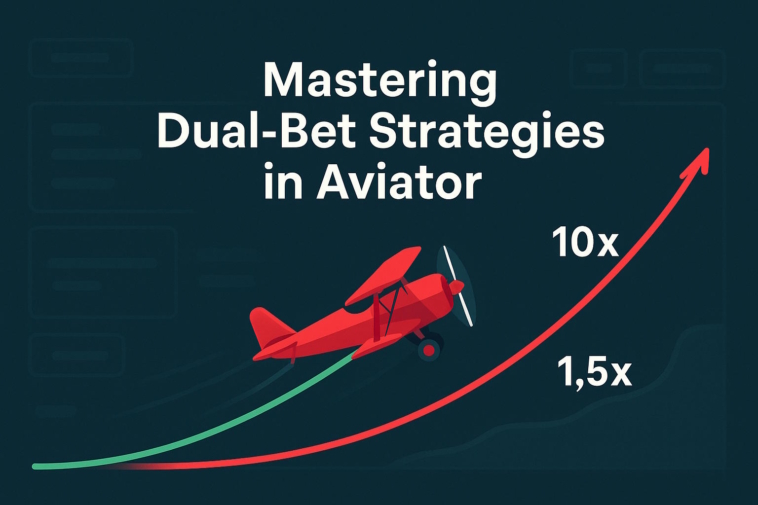Most of us arrive at crash games with a single-bet mindset—one stake, one cash-out, one hope. Yet Aviator Bet introduces a quieter, more flexible tool: the dual-bet function. Place two wagers at once, and you’ve suddenly split your aims—one bet to keep the session steady, the other to chase the occasional high-flying multiplier. Let’s unpack why seasoned players lean on this approach and how you might fold it into your own routine without drifting into wishful thinking.
Playing Both Sides of the Coin
In practice, a dual-bet session feels like balancing a scale. You set a safety bet—often a modest stake that auto-cashes at 1.3x or 1.5x. History shows the plane reaches these low multipliers in the majority of rounds, so the first wager acts as a buffer against rapid losses. Parallel to it sits the profit hunter bet, left to run toward 5x, 10x, or beyond. When the higher multiplier lands—and it will, though less often—you’re positioned to collect without having jeopardized the entire bankroll.
One reason this works: Aviator displays a long-term return-to-player (RTP) of roughly 97%. That percentage suggests the game returns £97 for every £100 wagered over time, yet distribution is uneven. Dual-betting merely reallocates where those pounds land, smoothing the path instead of chasing perfect timing.
Afterthought: in finance, we’d call this hedging—sacrificing a slice of potential upside so a single downturn doesn’t clear the account. The logic transfers neatly to crash gaming.
The Math of Measured Risk
Researchers studying crash games have established that the median multiplier for numerous crash games is about 1.7x when looking across many records of outcomes, while the tails of extreme highs extend out well past 100x on the same bell curve. Dual-betting follows in that curve:
* The first bet: goes for a small stake and takes a quick exit. Wins here will help control variance on subsequent bets.
* The second bet: stake an equal amount, or slightly larger amount, and only manually take your exit when you feel the multiplier is worth the risk.
That’s why bankroll rules matter more than any secret algorithm. Decide in advance: How many units can you afford to lose today? When do you step away? For a deeper exploration of these fundamental principles, our bankroll management resources offer additional perspectives on risk assessment and stake sizing.
When Theory Meets the Lobby
Of course, the model reads clean on paper. Reality supplies turbulence: short bursts of sub-1.5x rounds can erode the safety bet; waiting for 10x may exhaust patience long before it rewards discipline. That’s why bankroll rules matter more than any secret algorithm. Decide in advance: How many units can you afford to lose today? When do you step away?
Consider keeping each session short—say, 100 rounds—so fatigue doesn’t nudge you into reckless clicks. If the safety wager nets a handful of units early, resist the urge to double the profit bet “just this once.” Random Number Generators remain indifferent to hot streaks, no matter what the scrolling history suggests.
One overlooked element in dual-betting is session tracking—not just wins and losses, but the emotional patterns that emerge. You’ll notice certain multiplier sequences trigger different reactions: a string of early crashes might push you toward riskier profit bets, while consecutive safety wins can breed overconfidence. Document these moments. They’re data points as valuable as any mathematical formula.
Consider the long view, too. Dual-betting isn’t about maximizing today’s session—it’s about extending your relationship with the game across weeks and months. That safety bet you’re collecting at 1.4x? It’s buying you time to learn, to recognize your own decision-making patterns, and to stay in the game when pure luck runs thin.
Quick-Reference Checklist
Here’s the lone bullet list you asked for—some non-negotiables before the next take-off:
- Set auto-cash for the safety bet at 1.3x-1.5x; leave the second bet manual.
- Keep total stake per round under 2% of your bankroll.
- Review performance after each 100-round block; adjust stakes, not strategy basics.
- Log every exit point—memory distorts wins and losses alike.
Dual-betting won’t outsmart volatility; it simply reframes it. The approach is valuable because it borrows proven principles from portfolio management and applies them in a setting measured in seconds, not years. Still, no strategy supersedes the discipline of defined limits. The UK Gambling Commission reminds players that “no wager is ever risk-free, regardless of perceived system strength”. Hold that line, and dual-betting becomes a tool—not a promise.
Closing Thoughts
We all enjoy the adrenaline when the multiplier climbs, yet longevity in Aviator often hinges on quieter choices: smaller stakes, earlier exits, unemotional logs. By dividing intent between security and ambition, you gain room to think rather than react. Should the plane soar, great—you’ve kept a seat on board. If it stalls early, the session isn’t grounded before it even starts.
Harness dual-betting not as a silver bullet but as another lever in your control panel. When used thoughtfully, it helps keep the game where it belongs: entertaining, engaging, and safely within the boundaries you set for yourself.

